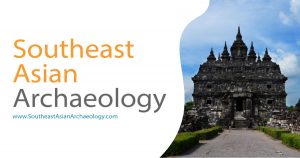Archaeology of Vietnam
The country of Vietnam is a land with many fascinating and in-depth histories that span from prehistoric times all the way to modern day. Vietnam has a large coastline situated along the Gulf of Thailand and the South China Sea. To the north is China’s Guangxi province and to the west is Laos’ Savannakhet province. Vietnam is known for the Dong Son culture, known for its bronze drums that have been found across Southeast Asia. For most of its history, the country now known as Vietnam was made of two regions: northern Vietnam was largely under Chinese rule, while the Cham kingdoms in the south were a collection of independent Indic polities located along the coastline. Vietnam is home to many Unesco World Heritage Sites including the Hue Citadel, Hoi An, My Son Sanctuary, Thang Long Citadel, Ho Citadel and the Trang An Landscape Complex.
To cite this page: Tan, Noel Hidalgo (2021, Updated 09 March 2023) Archaeology of Vietnam. Southeast Asian Archaeology. Available at: https://www.southeastasianarchaeology.com/vietnam-archaeology/
Overview
Back to top
The earliest evidence for human occupation in Vietnam comes from the Paleolithic era (45,000 to 10,000 years ago), while hominid (Homo erectus) fossils have been discovered in northern Vietnam dating approximately 500,000 years. For the periods involving prehistoric humans, Vietnamese nomenclature identfies a number of distinct assemblages (cultures) during the prehistoric period, including the Palaeolithic Son Vi culture, to the Bronze Age cultures of Phung Nguyen and Dong Son. Neolithic settlements appear in northern and southern Vietnam around 2,000 BCE, likely due to migrations of people from China.
Some of the most notable prehistoric cultures in Vietnam include the Hoabinhian culture, a lithic industry using unificial flakes made from cobbles that has been used to describe many other similar assemblages across Southeast Asia; the Bronze Age Dong Son culture, noted for their skill in bronze casting (exemplified by the Dong Son drums) but also associated with rice agriculture and animal domestication; and the Su Huynh culture found in Southern Vietnam, who are thought to be the likely ancestors of the Cham people.
From the 2nd century CE, a collection of Indianized kingdoms known as Champa emerged from the southern to central coasts of Vietnam. These kingdoms facilitated trade between China, Java and India . Champa is known for its many Hindu temples, most notably the Po Nagar tower in Khánh Hòa Province and the My Son sacntuary in Quang Nam province. Champa was likely influenced by ancient Funan kingdom in neighbouring Cambodia.
In the northern part of modern-day Vietnam, tradition holds that the Hồng Bàng dynasty established the first Vietnamese state in 2879 BCE. From the third century BCE, records become more reliable and the Au Lac and Nanyue kingdoms emerge, signalling the beginning of Vietnamese history. From the first century BCE, Vietnam was part of the Chinese Han Empire and fell under its sporadic control. Chinese rule lasted until the 10th century, punctuated by periods of rebellion, invasion and independence. The establishment of the Dai Viet Empire in the second half of the 10th century marked the first time that Vietnam came under an officially unified rule independent of China. Over the course many succeeding dynasties, Dai Viet expanded southwards, coming into conflict and eventually absorbing Champa by the 19th century.
Like many other countries in Southeast Asia, European colonialism played an important role in the history of Vietnam. The first Europeans in Vietnam were Portuguese who reached the region in 1544, but it was the French that developed substantial trading interests in the 18th and 19th century. The French eventually came to take control of all of Vietnam as part of French Indochina which included Cambodia and Laos. French rule, and the rule of the Nguyen Dynasty, ended in 1945 following the end of World War II. South Vietnam subsequently became a part of the Republic of Vietnam, which was officially declared on September 2, 1955. The North was controlled by the Communist government of North Vietnam and became a separate state on October 28, 1954. In 1976 North and South Vietnam were reunited into the Communist state of the Socialist Republic of Vietnam. In recent decades, Vietnam has transformed from a Third World country to an emerging market.
Archaeology plays an important role in projecting Vietnamese power and sovereignty through history. Examples include Vietnamese research into territorial claims over the contested Truong Sa (Spratly) and Hoang Sa (Paracel) Islands, the archaeology of the Battle of the Bach Dang River, in which Vietnamese forces successfully repelled the invading Southern Han army and ended Chinese domination. Today, archaeology is usually carried out by the Institute of Archaeology, which is part of Vietnam’s Academy of Social Sciences, and often in collaboration with local museums. There are also many active research collaborations with overseas scholars investigating a wide range of interests.
Notable Archaeological Sites in Vietnam
Back to top
Here is a list of some of the more significant archaeological sites in Vietnam. Not all of these sites are open to the public, and the locations marked on the map may not be exact. For more information about museums in Vietnam, check out the museum page here.
- Sa Pa Ancient Rock Field: Sa Pa is a rock art site located in the northern Lao Cai province. The valley contains over a hundred engraved boulders, and the origins of the carvings have yet to be determined.
- Dong Son Village: This village in Thanh Hoa province lends its name to the famous Bronze Age culture of the same name.
- Ho Citadel: For a brief period in the 15th century, this stone fortress in Thanh Hoa province served as the capital of Vietnam. It is now a Unesco World Heritage Site.
- Con Moong Cave: An important mesolithic site in Thanh Hoa province, with cultural layers associated with the Son Vi, Hoa Binh and Bac Son cultures.
- Thang Long Citadel: The imperial citadel of Hanoi served as the royal capital for much of Vietnam’s imperial period.
- Bach Dang Relic Site: Archaeological site commemorating the Battle of the Bach Dang River, when the Dai Viet successfully repelled the invading Mongols in the 13th century
- Ha Long Bay: Dotted with limestone karsts, humans have been living in the Ha Long Bay area since the Pleistocene.
- Trang An Landscape: The mixed cultural and natural landscape is home to the Hoa Lu Citadel, one of the early capitals of the Dai Viet.
- Man Bac: Neolithic archaeological site associated with the Phung Ngyuen culture.
- Hue Citadel: The imperial capital of Vietnam during the Nguyen Dynasty period in the 19th and 20th centuries.
- Hoi An: An ancient town in Central Vietnam that is held as an exemplar of a trading port city during the 15-19th centuries.
- Po Nagar: 8th century Cham Tower located in Nha Trang, dedicated to the goddes Yan Po Nagar.
- My Son Sanctuary: Located in Quang Nam province, this site contains the ruins of a number of Hindu temples dating back to the seventh century. The temples have been damaged by further warfare over time, but many ancient structures still stand.
- Oc Eo: Archaeological site in Southern Vietnam and likely a port for the Funan kingdom, with a canal connecting to Angkor Borei in Cambodia. Finds such as Roman coins indicate its links in the ancient global trade network.
- An Son: One of the most extensively excavated Neolithic sites in Vietnam which show evidence for domesticated dog and interactions with other regions in Southeast Asia.
Recommended Books
Back to top
There are a number of books relevant to the archaeology and history of Vietnam, and the list below is my personal recommendation based on what I have in my library or have read, and easily available. There are some local-language publications that are not available in the internet, and newer books are higher up on the list. Some of these links are affiliate links and I may receive a commission if you click on them and make a purchase. For other sources of reliable academic information, you should also check out the books page for latest releases and the occassional free book, as well as the journals page for the latest scientific research.
Most Popular Vietnamese Archaeology Posts
Back to top
These links are dynamically generated and are based on the most viewed posts in the last 30 days.
Vietnam Archaeology News Archive
Back to top
The news reports indexed below usually link to external sites that were active at the time of posting; sometimes websites may be temporarily down or may have reorganised their underlying architecture or have even closed down – in these cases the links may not be available. Most of the news articles archived are in English; this is largely because I do not have a working competency in Vietnamese, although when I am made aware of stories in this and other languages I try to index them.
Links to Vietnamese Archaeology Sites
Back to top
These are links to external sites and unless stated, I have no connection with the organisations or entities in these links or control over their content. They are sorted alphabetically, but you should also explore the Resources page which have links sorted by themes. If you have a link to suggest, please get in touch!
- Banyan – EFEO’s Digital Library with over 10,000 documents online.
- Cham Studies – Website was established for the purpose of gaining a deeper and more refined understanding of the civilization of Champa and the Cham people.
- France-Vietnam des patrimoines partagés en ligne – Online repository of shared French and Vietnamese documentary heritage, a collaboration between the National Libraries of France and Vietnam.
- SUNDASIA – Project exploring how prehistoric tropical communities adapted to cycles of coastal inundation over the last 60,000 years in northern Vietnam, and how these data can help inform models and responses to modern climate-induced rising seas in this region.
- Vietnam Archaeology and Cultural Heritage – Website run by Alex Giang.
- Vietnam Institute of Archaeology – Viện khảo cổ học is the national research institution under the Vietnam Academy of Social Sciences.
- Vietnam Maritime Archeology Project – To promote Underwater Cultural Heritage and Maritime Archeology in Vietnam. Facebook page.
- Vietnam National Museum of History (Hanoi) – The Vietnam National Museum of History is a public service unit under the Ministry of Culture, Sports and Tourism, which is at the forefront of the system of Vietnam’s history-society museums.
- Vietnam National Museum of History (Ho Chi Minh City) – The southern branch of the Vietnam National Museum of History in Ho Chi Minh City.
- Viet Nam prehistory – A quick and pictorial overview of the prehistory of Viet Nam.

























































